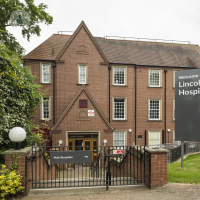Hip fracture
Mr Majeed Shakokani - Orthopaedic surgery
Created on: 11-13-2012
Updated on: 10-18-2023
Edited by: Sophie Kennedy
What is a hip fracture?
A hip fracture is a break in the femoral bone. Most hip fractures occur at one of the two areas of the femoral bone:
- Femoral neck: located at the top of the femur.
- Intertrochanteric region : located a little lower than the actual hip joint, in the area of the upper femur that projects outward.
- There is also a third type of hip fracture, called an atypical fracture. This type of hip fracture occurs in people who have been treated over a long period with drugs that increase bone density (bisphosphonates).

Prognosis
A hip fracture is a serious injury with potentially life-threatening complications. The risk of hip fracture increases with age. In fact, it is one of the most common bone injuries among people aged 65 and older.
In addition, people who have had a hip fracture are at increased risk for weakened bones and further falls, which means a higher risk of suffering another hip fracture.
What are the signs of a hip fracture?
In general, the symptoms of a hip fracture are:
- Severe pain in the hip or pelvic area
- Bruising and/or swelling in the hip area
- Inability to bear weight on the hip
- Difficulty walking
- The affected leg may look shorter than the other leg and may be turned outwards.
How are hip fractures diagnosed?
If you have a fall and are unable to get up or stand, your doctor may take a hip x-ray to determine whether you have a hip fracture.
If the x-ray does not show a fracture, but you still have hip pain, the doctor may request an MRI or bone scan to look for a minor injury.
What are the causes of a hip fracture?
Most hip fractures in people with normal bone density are the result of a severe impact, such as in a traffic accident. However, for the elderly and people with osteoporosis, the risk of suffering this type of fracture is high due to the fragility of their bones. In these cases, a minor trauma or fall may be enough to cause the injury.
Can hip fractures be prevented?
In general, the prevention of hip fractures is based on avoiding knocks and falls and maintaining maximum bone strength. The following are some preventive measures:
- Engage in moderate physical activity on a regular basis
- Avoid tobacco and alcohol
- Eat foods that are rich in calcium and vitamin D
- Increase safety in the home by removing any obstacles or objects that could cause a fall (carpets, cables, slippery floors, dark areas)
- Take care when engaging in sports or physical activities
How are hip fractures treated?
Treatment usually involves surgery, using different types of techniques depending on the location and severity of the fracture, whether the broken bones are not aligned correctly (displaced fracture), the person’s age, and undiagnosed diseases.
- Internal repair with screws: metal screws are inserted into the bone to hold it together while the fracture heals.
- Special bone pins
- Hip replacement (total or partial)















